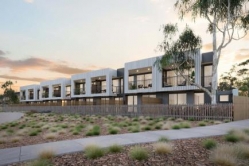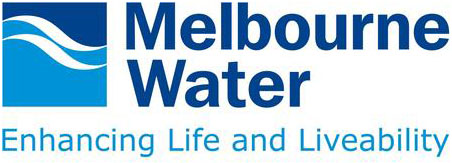resource library
Array
Salt Torquay Estate
Salt Torquay Estate
Barwon Water / Spiire
Published: 26 February 2020
Project Overview
Barwon Water identified that the highest realisation value for the redundant 5.4ha Torquay water basin site would be achieved by it self-managing the subdivision of the site and sale of individual vacant lots. The One Planet Living framework has been applied to the residential development with energy and water management and open space greening being underlying features of the estate’s design.
The estate sits within Torquay’s Spring Creek catchment, and while its 105 mixed-size dwellings provide a higher density land use than typical for greenfield estates, stormwater will be managed to green the estate and protect the natural waterway. And per-capital mains water consumption will be at least 30% lower than average. This is achieved through household rainwater harvesting and reuse, use of smart meters, permeable driveways, widespread indigenous vegetation, and streetscape and end-of-pipe bioretention.
Drivers and Objectives
• Facilitate housing diversity and demonstrate and promote development solutions that respond to climate change
• Pilot Barwon Water’s smart water meter roll-out
• Develop and dispose a redundant former water basin site, balancing profit and social/environmental benefit
• Demonstrate that leading IWM practice can co-exist with profit
• Create a holistically leading housing estate to test and demonstrate sustainable housing initiatives
Organisations
Barwon Water and Spiire Australia.
Project Outcomes
• Salt Torquay has received “national leadership” status under the One Planet Living initiative. Estate construction is complete and housing construction will commence in 2020. Barwon Water will double the net value of the landholding by delivering the subdivision itself.
• A localised stormwater retention basin has been created that includes gross pollutant trap, biofiltration, a nature play space, picnic area, art installation, traditional owner recognition, walkway to local primary schools and is clad in reused rock beaching as acknowledgement to the former water supply basin removed from the site.
• A Barwon Water pipe reserve has been converted to a landscaped shared path link
• Street swales and raingarden, planted out with indigenous vegetation, will be complemented by street-facing gardens being similarly planted to create a coherent habitat for wildlife while having very low water demand. Permeable turf-grid driveways will be used to soften landscapes, reduce runoff and promote urban cooling.
• Houses must be a minimum 7.5 star NatHER rated, include a 5,000 or 10,000 litre rainwater tank plumbed to toilet, laundry and garden use and use a smart water meter to monitor leakage and consumption patterns
• A 250kW solar array has been commissioned, which when combined with compulsory household solar, subsidised batteries and energy efficient houses, will create the equivalent of over 90% of the estate’s energy consumption. (Reticulated gas has not been provided to the estate).
Lessons Learnt
• There is significant community interest in more sustainable housing and estate-wide blue-green initiatives - with many buyers seeking a housing community aligned with their personal values relating to a healthy environment
• Flexibility is required for developers and agencies to choose appropriate IWM initiatives depending on attributes of a site. A lower rainfall future is assumed, but dual or alternative water supply, for example, may or may not be preferred to household-based conservation systems depending on local circumstances.
• Accessible, landscaped, open air storm water retention and biofiltration facilities provide significant opportunities to create recreational space and a place for nature. The cost for developers to provide such facilities may require a larger catchment and significant associated land sale revenue to be feasible.
Project Cost
$12 million
Timeframe
2015 - 2021
Contact
Tony.Belcher@barwonwater.vic.gov.au
03 5226 2500
